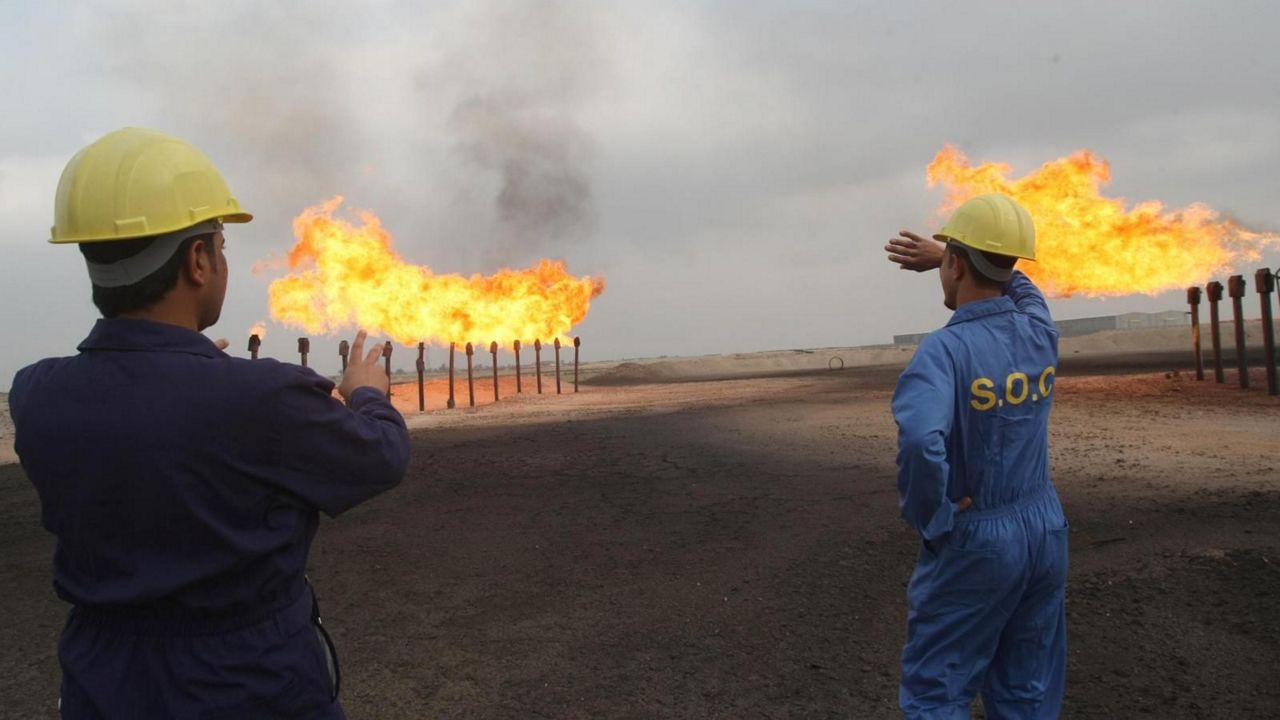TEXAS — A report by environmental watchdog group Earthworks found that 69-84% of methane flares in Texas are unpermitted.
The report compares directly observed flares from oil and gas site flyovers against the state regulator’s flaring permitting database.
Oil and gas flaring spews methane and other poisonous, volatile gases into the air at the end of a pipe that funnels the gas into a flame. The effect can look like birthday candles dotting the flat Texas landscape. Energy companies typically don’t want to shoulder the cost of processing this chemical stew, so it’s cheaper just to burn it.
A Spectrum News story from February found that 75% of oil and gas operations on General Land Office lands were functioning without permits. That number has gone in the wrong direction, according to this latest report.
For its most current report, Earthworks cross referenced the Texas Railroad Commission’s Master Flaring and Venting Document with publicly available data from Environmental Defense Fund flyovers, which were conducted in January, March and June 2020, mainly in the RRC’s District 8 covering the Permian Basin. The RRC, the agency that oversees oil and gas activity in Texas, reviewed the report before publication and their comments were incorporated.
“As the world’s climate scientists tell us we need to cut methane pollution to avoid climate catastrophe, Texas regulators can’t even be bothered to track methane flaring,” said Jack McDonald, the report’s lead author and Earthworks’ Texas Field Analyst.
The Intergovernmental Panel on Climate Change recently released a report — the consensus of the world’s climate scientists — that suggested governments around the world take immediate action to cut climate pollution to avoid a 1.5-degree rise in global temperature. The report devoted an entire chapter to methane and similar super pollutants.
“To make good on his climate promises, President Biden must address the Permian climate bomb that’s exploding in Texas,” said Sharon Wilson, the report’s co-author and Earthworks’ Senior Field Advocate.
Under Biden, the Environmental Protection Agency announced that it would propose stronger federal rules to cut methane pollution from oil and gas production by this fall. Under the Clean Air Act, enforcement of federal rules is delegated to the states, but that authority can be rescinded. In response to the EPA’s announcement, Texas regulators that would enforce those rules sent a July 30 letter to EPA opposing them.
"For those who may not be familiar with the environmental and policy implications of flaring and venting, the new Earthworks report is a valuable overview of these issues,” said State Rep. Vikki Goodwin, D-Austin. “The report also makes a compelling case that many oil companies could be acting as better stewards of the environment, and that the Railroad Commission of Texas needs to exert stronger regulatory authority over them. The report is an important document that everyone should read."
Properly combusted flaring is responsible for .6% of all human-driven fossil fuel carbon dioxide emissions. Unlit and malfunctioning flares are more of a climate threat because they release methane — which is 86 times more powerful a climate pollutant than carbon dioxide. Collectively, oil and gas production is the country's top industrial methane polluter.
"No state emits more toxic chemicals and methane from oil and gas than Texas, and yet Texas regulators have turned a blind eye toward adopting new regulations and only enforce selectively, said Cyrus Reed, conservation director of the Sierra Club Lone Star Chapter. “Unless we can change our captured state agencies, we will have to rely on federal rule-making and oversight, citizen suits and enforcement and reports like this one to shine a light on an out-of-control industry and a corrupt regulatory regime."
Flaring can result in health problems for people living near the flames because flares also release toxic volatile organic compounds like benzene. Pregnant women who live near flares have as much as a 50% greater chance of premature birth. Living near flares is linked to eye, nose and throat irritation, respiratory problems, nausea, headaches and dizziness.



